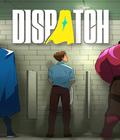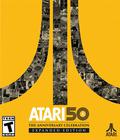One of the things I realized while watching Wreckfest in action is how a lot of racing games have become relatively bloodless. Nobody wants their trademark, high-value brand names dragged through the muck, so even when you do something dangerously stupid that should total your $250,000 Italian race car, the worst that tends to happen is that you ding it up a little bit. You might break the windows or lose the hood, but it's always going to look cool, so as not to damage the brand.
Bugbear Entertainment's Wreckfest, as one might figure from the name, has no such concerns. It's a demolition derby-style racing game where every car is a Brand X, fully user-customized stock car, and you can cause crashes in these things that will turn them into modern art exhibits. They all look like virtual garage projects, and do not care for your modern trivialities like "power steering" and "road safety." You can smash them up to a frankly ridiculous degree, and after one trip to the garage, they'll be ready to do it all over again.
In action, Wreckfest has a spectacular amount of detail, due to an elaborate physics engine. When you manage to pull off yet another devastating high-speed collision, you can pause the game right there and unhook the camera, so you can fly it around and take screenshots of the destruction from every possible angle. When you do, all the little bits of metal that have flown off both cars have been generated and are still governed by physics, so you can watch sheared-off bits of metal fly and bounce just as they would if they were real. I get the feeling that on max settings, somebody could use this as a forensic tool for simulating car crashes.
However, the game isn't necessarily bound by those physics. One thing that Bugbear Entertainment is proud of, and that their developers were sure to show to me, is that there are four separate sliders that govern the realism of Wreckfest's physics, including one master toggle that lets you choose how realistic the races can get. You can crank it up for maximum demolition-derby realism or turn it down to enjoy a more arcade-style experience. The game is built around customization, and its audience on Steam Early Access has already begun generating new tracks, cars, and parts for it. Bugbear regards Wreckfest as a sort of spiritual sequel to 1996's Demolition Derby 2 on the PlayStation, and its Early Access players followed that up with a user-made racetrack for Wreckfest that's taken straight from DD2, including its low polygon count.
All that comes hand in hand with the typical amount of customization you can expect from a modern racing game, where you spend credits to purchase parts and paint jobs to put together the stock car of your dreams and/or nightmares. You can, and probably should, make your car into a technicolor nightmare in Wreckfest, which is a big point in its favor overall; I can't remember the last time I played or even heard of a racing game where I was effectively encouraged to make the ugliest car I possibly could.
Wreckfest has had an odd, long journey to store shelves, after surviving an abortive attempt at Kickstarter funding and largely being shepherded to market on the strength of its pre-orders. When I was speaking to its developers at E3, one thing came across very clearly, and that was that these guys had spent a lot of time and effort getting the game to exactly where they wanted it to be. There's a certain homebrew, garage-project feel to the game at heart, despite its high levels of polish, and it's already got a large number of players and content creators in early access. This is the kind of game that lives or dies by its community, at the end of the day, and it got that before it even came out.
More articles about Wreckfest











 Wreckfest is a demolition derby-themed racing game with special attention paid to soft-body damage modeling, sophisticated driving dynamics and in-depth vehicle upgrading, featuring both demolition derbies and more traditional track races.
Wreckfest is a demolition derby-themed racing game with special attention paid to soft-body damage modeling, sophisticated driving dynamics and in-depth vehicle upgrading, featuring both demolition derbies and more traditional track races.



















